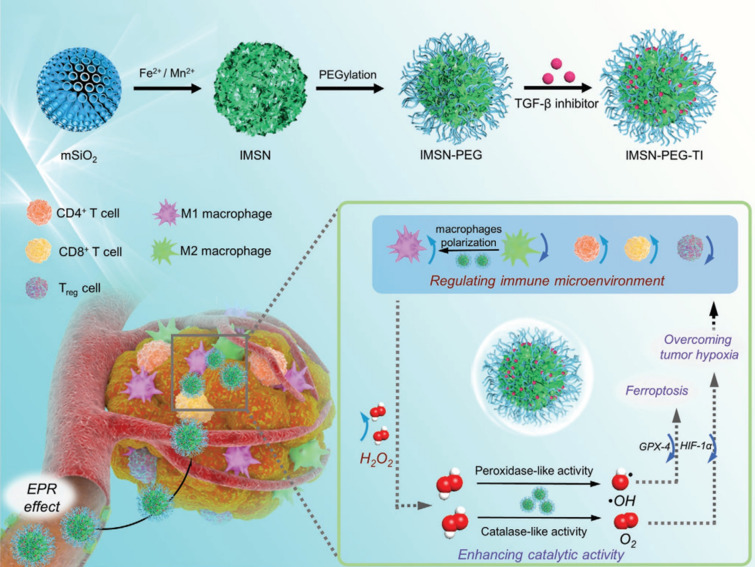Fig. 11.
Iron-based (ROS-generating) and manganese-based (ROS-scavenging) components are encapsuled into mesoporous silica nanoparticles (MSN) loaded with TGF-β inhibitor. Systemic administration led to the accumulation of nanoparticles in the tumor site through the enhanced permeability and retention (EPR) effect. O2 generation from the ROS-scavenging nanozymes relieve tumor hypoxia and regulate the TME through macrophage polarization. ROS-generating nanozymes increase local ROS levels through the Fenton-reaction, causing ferroptosis. Subsequently, tumor cell death releases TAAs which are captured, processed, and presented by DCs which activate effector T cells. TGF-β inhibitor was introduced to restrict the activation of Tregs.
Reproduced from [62] with permission from Wiley–VCH. Copyright 2020

